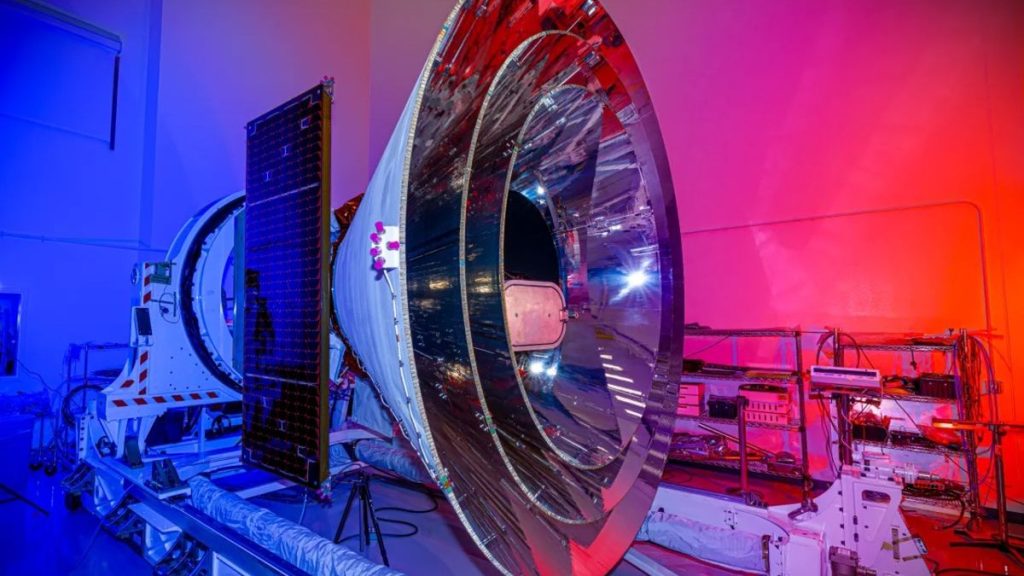An ambitious NASA mission to map the sky in 3D using a space-based observatory now has a target launch date of late February 2025.
NASA’s compact car-sized observatory, called Spectro-Photometer for the History of the Universe, Epoch of Reionization and Ices Explorer (or just SPHEREx for short), will map the millions of stars and galaxies visible from our planet in every direction, “like scanning the inside of a globe,” according to an agency statement. The satellite will launch into a polar orbit atop a SpaceX Falcon 9 rocket from Vandenberg Space Force Base in California.
Using the sky map, SPHEREx has three scientific goals to achieve. First, by measuring the distribution of hundreds of millions of galaxies, NASA seeks to understand more about an ancient cosmic event called inflation, when the universe increased exponentially just fractions of a second after the Big Bang. If the observatory is successful, scientists may gain improved insight into the physics underlying inflation and what drove the phenomenon.
Secondly, NASA is looking for a more complete picture of objects and sources radiating throughout the known universe. The observatory will gather data that will enable scientists to measure the “collective glow” of distant galaxies, including light from hidden galaxies that have never been observed individually before.
Finally, the SPHEREx mission will search our own galaxy, the Milky Way, for ingredients needed for life, including carbon dioxide and water. If SPHEREx finds them, it could give scientists a clue to how likely it is for these ingredients to be present when new planets form.
Scientists at NASA’s Jet Propulsion Laboratory (JPL) developed and built SPHEREx, which has a planned lifespan of two years. During this time, SPHEREx should produce two maps per year, according to JPL.
SpaceX won the contract for the launch back in 2021. The 329-lb (178 kilograms) spacecraft will launch aboard a Falcon 9 rocket from Space Launch Complex 4E at Vandenberg Air Force Base in California, with NASA’s Launch Services Program at Kennedy Space Center in Florida managing the launch. JPL heads the overall mission, including operations, systems engineering, integration, and testing.
A secondary payload for the same Falcon 9 launch is a constellation of four small satellites, representing NASA’s PUNCH mission (Polarimeter to Unify the Corona and Heliosphere). The satellites are headed to low Earth orbit. They’ll observe the sun’s outer layer, the corona, to study how mass and energy transform into solar wind.

